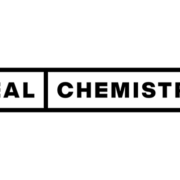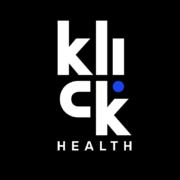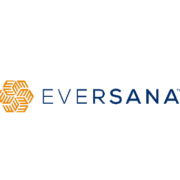Pharma and regulatory giants tackle AI trust and legislative challenges at largest ever Pistoia Alliance Annual Conference
The Pistoia Alliance, a global, not-for-profit alliance that advocates for greater collaboration in life sciences R&D, is calling for urgent collaboration to tackle growing challenges around AI regulation and use in life sciences. It comes following a survey, conducted at the Pistoia Alliance’s largest ever European conference, found 70% of life sciences experts recognize the potential of AI but are still struggling to get started or implement it at scale. Almost 300 attendees gathered under the theme ‘Collaborate to Innovate’, with speakers including pioneer of structural bioinformatics Dame Janet Thornton; Lead Scientist for the FDA Global Substance Registration System, Dr Larry Callahan; and experts in R&D from AbbVie, AstraZeneca, GSK, Elsevier, Roche, J&J, and more.
“The impressive attendance at our conference is testament to the willingness of the industry to collaborate and overcome common research and legislative hurdles. As technology develops at pace, the life sciences sector cannot afford to fall behind. Companies must run this race alongside each other, as a unified front, to ensure that everyone benefits equally from AI,” comments Dr Becky Upton, President of the Pistoia Alliance. “Our London conference is evidence of the Alliance’s ability to bring together multiple groups and create a forum for safe and effective collaboration. We look forward to progressing several new projects alongside our existing portfolio as we tackle both long-standing and emerging challenges together.”
The Pistoia Alliance’s survey also revealed worries around the trustworthiness of AI, with 63% of respondents expressing concern that poor data quality could lead to incorrect AI conclusions and potentially harmful clinical decisions. Data quality was also a central theme of the keynote talk given by FDA Lead Scientist, Dr Larry Callahan who discussed the Pistoia Alliance’s influence over the widespread adoption of data standards to make regulatory submissions more efficient. Dr Callahan cited the Alliance’s In Vitro Pharmacology Group and Global Substance Registration System (GSRS) Consortia as successful examples of this.
The Alliance also announced several new projects and initiatives at the event. These include:
-
Clinical Operations Ontology for clinical trial site feasibility: Clinical trial investigator site selection relies on manually collecting data via questionnaires, which assess whether a site has the right equipment, necessary staff, and diversity of patients to conduct a study. Since much of this information is lost after a trial commences, questionnaires must be repeated for each new trial. The ClinOps project will create a data model to improve the management, analysis, and exchange of clinical operations data, so companies can choose the best investigator site for their study at a lower cost and with reduced manual data collection. The project marks a significant advancement in modelling domain-specific clinical trial design knowledge in a machine-readable format. · Digital accessibility guide: The freely available guide, published by the Alliance’s User Experience Life Sciences Community (UXLS), will inform hardware and software designers how to develop R&D tools that are accessible to all users to encourage technology adoption. For example, having audio descriptions for users with visual impairments, offering transcripts for those with hearing issues, and making websites easy to navigate.
-
FAIR Maturity Matrix: The concept of FAIR data (Findable, Accessible, Interoperable, Reusable) has been around for nearly a decade, and is an essential step to making R&D data AI-ready. While many pharma companies are well on their way to embedding the FAIR principles, there is no simple, agreed, maturity assessment model for FAIR implementation. The Alliance’s FAIR Implementation Project has designed a matrix to address that gap, with the first draft freely available now.
-
Labs2030: This relaunch of the Alliance’s successful Lab of the Future Community will tackle integrating the next wave of disruptive technologies into scientific workflows, including generative AI and virtual lab environments. Labs2030 will bring together scientists and technologists to build the next-generation laboratory environment from a data standards, process, instrument, and knowledge sharing perspective.
“What makes the Alliance stand out is our commitment to launching projects that our members have asked for and that will deliver tangible change to the life science industry,” comments Dr Christian Baber, Chief Portfolio Officer, the Pistoia Alliance. “These new projects, organized under our strategic priorities, will empower companies to navigate change and overcome challenges faster than going it alone. Whether that’s accelerating the adoption of emerging technologies to get new drugs to patients faster, or making headway on their diversity or sustainability goals. As 2024 progresses, we’re also excited to strengthen our ties with global regulatory agencies, involving them further in our projects and communities.” The Pistoia Alliance is now welcoming registrations for its next member conference in Philadelphia, 12-13 November. To find out more about membership visit www.pistoiaalliance.org
About The Pistoia Alliance
The Pistoia Alliance is a global, not-for-profit members’ organization made up of life science companies, technology and service providers, publishers, and academic groups working to lower barriers to innovation in life science and healthcare R&D. It was conceived in 2007 and incorporated in 2009 by representatives of AstraZeneca, GSK, Novartis, and Pfizer who met at a conference in Pistoia, Italy. Its projects transform R&D through pre-competitive collaboration. It overcomes common R&D obstacles by identifying the root causes, developing standards and best practices, sharing pre-competitive data and knowledge, and implementing technology pilots. There are currently over 200 member companies; members collaborate on projects that generate significant value for the worldwide life sciences R&D community, using the Pistoia Alliance’s proven framework for open innovation.
Source: The Pistoia Alliance









